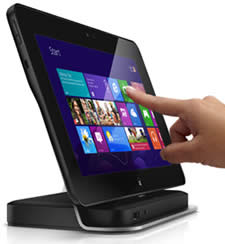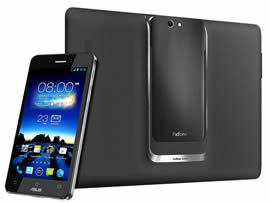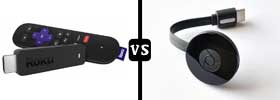Difference between Dell Latitude 10 Windows Tablet and Asus Padfone Infinity
Key Difference: The Latitude 10 tablet is quite slick and light weight at 658 grams. The devices comes with a 10.1-inch IPS (1366 X 768) Wide View Angle LCD capacitive touch screen and is powered by a 1.8 GHz Intel Atom Z2760 processor. The Asus Padfone Infinity smartphone is a slick 5-inch full HD 1920x1080, Super IPS+ with Capacitive Multi touch panel and provides approximately 441 ppi density. The device is a bar phone, with curved corners giving it a similar look to the ‘iPhone’ and ‘HTC One’. The Asus Padfone Infinity Dock is basically the 10-inch tablet shell that allows users to dock their phone into the tablet by sliding it into a slick slot on the back.
 Dell is a popular computer manufacturer, which has made a name for itself in the laptop and desktop market. However, the company is still trying to garner a name for itself in the tablet market. The company launched the new Dell Latitude 10 Windows tablet in the beginning of 2013, that claims to bring all professional and personal needs of the desktop and laptop to a portable tablet. The tablet runs on Windows UI and OS to make it compatible with almost all Windows desktops and PCs.
Dell is a popular computer manufacturer, which has made a name for itself in the laptop and desktop market. However, the company is still trying to garner a name for itself in the tablet market. The company launched the new Dell Latitude 10 Windows tablet in the beginning of 2013, that claims to bring all professional and personal needs of the desktop and laptop to a portable tablet. The tablet runs on Windows UI and OS to make it compatible with almost all Windows desktops and PCs.
The Latitude 10 tablet is quite slick and light weight at 658 grams without the dock and only the two-cell battery, with the four cell battery the device can weigh around 850 grams. The device is quite easy to hold in landscape mode, while in portrait it is a bit bulky and awkward. The devices comes with a 10.1-inch IPS (1366 X 768) Wide View Angle LCD capacitive touch screen that provides a decent enough resolution; however, the device does fall short on pixel density compared to the top-of-the-line tablets. The device also provides adequate picture quality, nothing mind-blowing, but it’s bad enough to complain either. The screen is made of Corning Gorilla Glass that protects it from shattering and small scratches.
The company has incorporated a number of ports for easy connectivity on the device itself such as USB 2.0, SD Memory Card Reader, Docking Connector, Stereo headphone/ Microphone combo jack, Mini-HDMI, Micro-USB charging port and Micro-SIM slot. The device also has the volume rocker and the power button on it in addition to all the ports. The device can be made into a laptop, similar to the other tablets in the category with a dock. However, the dock differs a little from the others and is only a plastic base with a metal support plate that stands at a weird angle and holds the tablet up. The dock itself houses four USB ports, an HDMI output, an audio-out jack and an Ethernet connection. The dock allows the device to support external keyboards and mouse that can be attached to the device.
The device is powered by a 1.8 GHz Intel Atom Z2760 Processor with Intel® Burst Technology, making it quite fast and powerful for handling day to day functions. The tablet also runs a full version of the 32-bit Windows 8 or Windows 8 Pro (depending on the pricing of the model), which means that a person can use it as a proper desktop and install own desktop software, run different programs as they would on a proper desktop computer. This makes the tablet very customizable for personal as well as professional needs. The device comes with a 2 GB RAM, which lacks performance compared to the Core i5 processors. According to many review websites, the system is best for simple tasks and limited multitasking. The system also is a bit sluggish, when shifting from portrait to landscape modes.
The tablet comes with two battery options: 2-cell (30Whr) Lithium Ion battery (swappable) and optional 4-cell (60Whr) Lithium Ion battery (swappable) for more power. The battery life is quite excellent and should last around 10 hours, according to Dell. The swappable battery allows users to get more juice out of the device by doubling the battery life. The tablet also comes in three different variants: $649 - Dell Latitude 10 essentials configuration - 64GB storage; $899 - Dell Latitude 10 - 64GB storage and $999 - Dell Latitude 10 (enhanced security) - 128GB storage. They have slight differences and added features that are available in the higher priced version; however, the hardware is the same in all of the versions. The additional features in the high end tablet include fingerprint and smart card reader. The second and the third version come with Windows 8 Pro, while the basic one comes with Windows 8. Addition features in the two most expensive models are: Wacom stylus support, rear LED flash, micro-USB charging port, mini-HDMI port, micro-SIM slot and hardware TPM chip.
 Asus has announced its latest phone and tablet in the Padfone series, knighted the Asus Padfone Infinity. The original Asus Padfone did not reach the Western Shores but the company states that the Padfone Infinity is set for world-wide launch in the second quarter of 2013. Similar to the original Padfone, the Padfone Infinity is available just as smartphone or along with a tablet dock that allows seamless transition between phone and tablet needs. The Padfone Infinity is a pretty intriguing concept that allows the phone to dock on the tablet, which powers the tablet and transfers all the data on the tablet for use. However, without the phone the tablet is just a shell without any ‘brain’ of its own. The phone/tablet is set to provide serious competition to rivals Sony Xperia Z Tab, iPad 4 and Samsung Galaxy Tab. Let’s cover its features separately.
Asus has announced its latest phone and tablet in the Padfone series, knighted the Asus Padfone Infinity. The original Asus Padfone did not reach the Western Shores but the company states that the Padfone Infinity is set for world-wide launch in the second quarter of 2013. Similar to the original Padfone, the Padfone Infinity is available just as smartphone or along with a tablet dock that allows seamless transition between phone and tablet needs. The Padfone Infinity is a pretty intriguing concept that allows the phone to dock on the tablet, which powers the tablet and transfers all the data on the tablet for use. However, without the phone the tablet is just a shell without any ‘brain’ of its own. The phone/tablet is set to provide serious competition to rivals Sony Xperia Z Tab, iPad 4 and Samsung Galaxy Tab. Let’s cover its features separately.
The Asus Padfone Infinity smartphone is a slick 5-inch full HD 1920x1080, Super IPS+ with Capacitive Multi touch panel and provides approximately 441 ppi density, making the screen visibly sharp, crisp and clear. The device is a bar phone, with curved corners giving it a similar look to the ‘iPhone’ and ‘HTC One’. The phone has a sleek metallic chassis, with a silver brushed look on the back. The phone is powered by the latest 1.7GHz quad-core Krait Qualcomm Snapdragon 600, providing fast responsiveness from the device. It offers the latest Android v4.2 Jelly Bean. The phone has a 2GB RAM and is available with 32/64 GB of internal storage capacity. The phone houses a 13MP primary camera and a 2MP secondary camera, with HD recording capability. The massive battery power allows the phone to provide up to 19 hours of 3G talk time. The company also introduced a bunch of new features such as Asus Echo, SuperNote, ASUS Story, Instant Dictionary and two years’ free Cloud Storage with 50GB ASUS WebStorage. The Asus Echo is the newest personal assistant, similar to Siri that allows the user to activate a number of features (search contacts, make calls, pick up incoming calls, activate the camera shutter for self-portraits, set alarms, change settings, etc) on the phone using voice commands. The new SuperNote supports real-time handwriting to text conversion and is sensitive enough to accurately translate from handwriting to text. Asus Story allows users to create albums and story lines, while Instant Dictionary allows users to translate words, phrases and sentences in emails, web pages or apps.
The Asus Padfone Infinity Dock is basically the tablet shell that allows users to dock their phone into the tablet by sliding it into a slick slot on the back. The slot comes with rubber gromits that ensures that the phone locks into place and does not slide out and fall. When the phone is docked on the tablet, the tablet and the phone synchronize automatically and the apps that were on the screen of the phone automatically re-sizes itself and pops up on the tablet screen. The tablet sports a 10.1 Full HD 1920x1080, Super IPS+ with Capacitive Multi touch panel, similar to the phone, providing a clear and detailed picture on the tablet. The screen on both, the phone and the tablet, have a Corning Gorilla Glass covering. The tablet does not have a processor or anything such hardware on it. It does offer a few advantages to the phone. The tablet houses a 1MP front camera for video calls. The tablet is also capable to output 1080 Full HD video via Micro-USB compatible MyDP interface. The device also has a dialer and is able to accept and make phone calls and send text messages. The phone and the tablet have speakers have the ASUS Audio Wizard audio enhancement providing rich audio experience. The battery as a massive 5000 mAh Li-Polymer, that enhances the battery power of the phone allowing up to 40 hours of 3G talk time. The tablet also has the power to charge the phone three times with a full battery. The tablet starts charging the battery of the phone, when the phone is docked into the tablet.
The high-end phone/tablet hybrid comes with a high-end price of EUR 999 and should be around US$ 1300 when it finally reaches the States. The main purpose of such a hybrid is so that people can use one data plan and it eliminates the need for manually synchronizing the tablet to phone and vice-versa. The phone has also been criticized for the lack of the keyboard, which was one of the features available in the original Padfone. Will the phone be a massive success or failure will be seen when the phone finally becomes available world-wide.
The information for the detailed table about the two phones has been taken from Dell Website, Sydney Morning Herald Website, CNet.com, Asus website and GSMArena.
|
|
Latitude 10 Windows Tablet |
Asus Padfone Infinity |
|
Launch Date |
Q1/2013 |
Expected Release Q2/2013 |
|
Company |
Dell |
Asus |
|
Size |
274 x 176 x 15.9mm |
Phone:143.5 x 72.8 x 8.9 mm Pad: 264.6 x 181.6 x 10.6 mm |
|
Display |
10.1-inch IPS Wide View Angle LCD capacitive touch screen |
Phone: 5-inches, Full HD 1920x1080, Super IPS+ with Capacitive Multi touch panel Pad: 10.1-inches, Full HD 1920x1080, Super IPS+ with Capacitive Multi touch panel |
|
Screen |
1366 X 768 (~155 pixels) |
Phone: 1080 x 1920 pixels (~441 ppi pixel density) Pad: 1920x1080 pixels (~441 ppi pixel density) |
|
Protection |
Corning Gorilla Glass |
Corning Gorilla Glass on both the phone and the pad. |
|
Weight |
658 grams |
Phone: 141 grams Pad: 530 grams |
|
2G Network |
- |
GSM 850 / 900 / 1800 / 1900 |
|
3G Network |
- |
HSDPA 900 / 2100 |
|
4G Network |
4G LTE Multi-mode (Dell Wireless™ DW5806 for AT&T, Sprint and Verizon Wireless) Option |
LTE 800 / 1800 / 2600 / 2100 |
|
GUI |
Windows 8 UI |
Asus' UI |
|
CPU speed |
1.8 GHz Intel Atom Z2760 Processor with Intel® Burst Technology |
1.7GHz quad-core Krait Qualcomm Snapdragon 600 |
|
GPU |
Intel Graphics Media Accelerator |
Adreno 320 |
|
OS |
Windows 8/ Windows 8 Pro |
Android v4.2 (Jelly Bean) |
|
Chipset |
Intel Atom Z2760 |
Qualcomm APQ8064T Snapdragon 600 |
|
RAM |
2 GB |
2 GB |
|
SIM Size |
miniSIM (WWAN-only |
nanoSIM |
|
Internal Memory |
64 GB |
32/64 GB |
|
Expandable Memory |
Up to 128GB |
N/A |
|
Sensors |
Ambient light sensor |
G-Sensor, E-compass, Gyroscope, Proximity, Light Sensor |
|
Connectivity |
Wireless LAN + Bluetooth (Standard): Dell Wireless™ 1536C (802.11 a/b/g/n 1X1) and Bluetooth 4.0 LE Combo Card Mobile Broadband4 & GPS Options: Dell Wireless ™ 5565 HSPA+ Mini Card Option Gobi™ 4G LTE Multi-mode (Dell Wireless™ DW5806 for AT&T, Sprint and Verizon Wireless) Option |
GPRS Class 10, EDGE Class 10, LTE, Bluetooth, Wi-Fi, USB, Wi-Fi hotspot. |
|
Data |
USB, Wi-Fi, HDMI, SIM (Data only), Bluetooth |
GPRS, EDGE, WLAN, Bluetooth, NFC, USB, USB Host. |
|
Speed |
1.5GHz HFM, 600MHz LFM |
DC-HSPA+, 42 Mbps; HSDPA, 21 Mbps; HSUPA, 5.76 Mbps; LTE, Cat3, 50 Mbps UL, 100 Mbps DL |
|
WLAN |
Wi-Fi 802.11 a/b/g/n 1X1 |
Wi-Fi 802.11 a/ac/b/g/n, Wi-Fi Direct, dual-band, Wi-Fi hotspot |
|
Bluetooth |
Bluetooth v4.0 |
Bluetooth v4.0 with A2DP |
|
USB |
USB v2.0 |
microUSB v2.0 (MHL), USB Host |
|
Primary Camera |
8 MP rear camera |
13 MP, 4128 x 3096 pixels, autofocus camera |
|
Secondary Camera |
2 MP front camera |
Phone: 2 MP 1080p@30fps camera Pad: 1MP front camera |
|
Video |
720p HD video recording capability |
1080p@30fps |
|
Camera Features |
|
|
|
Sound Enhancement |
stereo headphone/ microphone combo jack, integrated/ noise reduction array microphones |
ASUS Audio Wizard ASUS Sonicmaster |
|
Audio supported formats |
- |
MP3/3GP/AAC/AAC+ |
|
Video supported formats |
- |
MP4/H.264/H.263 player |
|
Battery Capacity |
2-cell (30Whr) Lithium Ion battery (swappable) Optional 4-cell (60Whr) Lithium Ion battery (swappable) |
Phone: 2400 mAh Li-Polymer Pad: 5000 mAh Li-Polymer |
|
Talktime/ Multimedia |
Up to 10 hours |
Phone: 3G: 19 hours Pad: 3G: 40 hours |
|
Standby Time |
- |
Phone: 3G: 410 hours Pad: 3G: 920 hours |
|
Available Colors |
Black |
Titanium Gray, Champagne Gold, Hot Pink |
|
Messaging |
Email, Push Email, IM |
SMS(threaded view), MMS, Email, Push Email, IM |
|
Browser |
HTML5 |
HTML5 |
|
Radio |
No |
FM radio |
|
GPS |
- |
A-GPS & GLONASS |
|
Java |
No |
Yes, via Java MIDP emulator |
|
Additional Features |
|
|
Image Courtesy: dell.com, asus.com









Add new comment